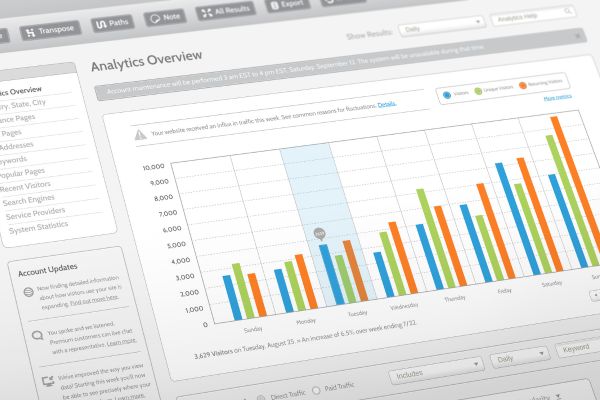Artificial Intelligence
Artificial Intelligence refers to the ability to develop intelligent software or smart machines that can imitate human brain functions such as reasoning, problem-solving planning, optimal decision-making, sensory perceptions, and more. Business and research communities around the globe have noticed the ability of artificial intelligence to surpass human actions in knowledge discovery. The field has witnessed rapid advancements in the last two decades.
AI Characteristics and Main Components
These are the major components or frameworks which contribute to the implementation and operation of intelligent systems.
Feature Engineering
Feature extraction refers to the process of identifying a minimal number of informative features from the given dataset. If you choose the right features, machine learning can perform better.
The efficient feature extraction procedure ensures:
The reduction of disorder, known as Entropy, when classifying datasets based upon selected features. This is how Information gain is maximized.
Zero correlation between the features. This results in independence and minimal feature set. This goal is achieved by techniques such as Principal Component Analysis, Gram-Schmidt Orthogonalization Process, and others.
Artificial Neural Networks
A Neural Network consists of weighted interconnections among the computing nodes located at different layers. In the learning phase, the optimal connections weights are determined. They are adjusted according to the common weight-sharing strategy and in line with feedback from the implemented backwards propagation algorithm. Technically, each node calculates a weighted sum from the values it has input. Activation functions control the criteria for computing feed-forward values to the next layer. After a series, activation functions regulate the criteria for computing feed-forward and next-propagation values. Weights, network parameters, and other parameters converge to determine optimal values that lead to the best model.
The most common Artificial Neural Networks used are:
Convolutional Neural Networks combine the received input with the learnt spatial filters/patterns in order to identify features at the convolution level. These signals are then fed to the next layer that is fully connected in order to complete recognition tasks.
Convolution to translational variation is robust, which allows for the effective recognition and labeling of features. This approach is used extensively in image recognition applications.
Recurrent Neural Networks, (RNN), uses Long Term Short Memory for smart estimations of unknown values based on the past data.
Deep Learning
Deep learning architecture contains more layers between input and output than artificial neural network’s. This architectural change makes it possible for deep learning frameworks that can perform automatic feature extraction and classification learning. These models are trained with well-labeled datasets using supervised learning. Despite the complexity of the architecture, learning times can be greatly reduced by using high-performance parallel computing GPUs.
AI applications
Now we will be discussing how AI has transformed all areas, such as retail, finance and space research.
A few applications details are listed below:
Editing Genes in a Responsible Way
Personalized medical care can be achieved when the patient’s genetic blueprint is understood. Genome Sequencing is the method of analysing the nucleotide order. Genome sequencing will reveal which mutations are most likely to be treated.
Intelligent Disaster Response System
Modern rescue systems make use of AI-powered drones, robotics, and sensors to quickly collect precise information on the extent of the damage, the exact location, and topographical details about the area during times of crisis. Intelligent systems help rescue workers locate the safest assembly points and evacuate people from disaster-stricken areas. AI-equipped modules for disaster management stimulate mock disaster drills to identify potential vulnerable locations and plan precautionary actions to manage resource allocation.
Recommendation Systems
The most effective recommendation systems predict and identify user preferences for items based upon item profiles and inferences regarding users’ behaviour. The utility matrix shows user-item pairings, which indicate the willingness to use various items.
Two ways to find out users’ reactions to items:
Content-based recommendations use ratings and feedback to understand the users’ interests and suggest similar items.
Collaborative filtering emphasizes the identification of similar users and their preference for items.
Mathematically the utility matrix represented is sparse. The recommendation algorithm aims deduce unknown/missed entry from the few values known using clustering algorithms and matrix factors like singular value deduction (SVD), etc.
Artificial Intelligence’s Advantages
Below are the advantages of artificial Intelligence:
- Minimal Human Interaction: AI-powered solutions are the best-suited for situations where human life is at greater risk. Space exploration, defense operations like bomb disposal, workplaces with intense heat, mining, and other such situations are just a few examples.
- Accurate and Faster: Human errors are greatly reduced when AI-enabled applications are well trained. These AI versions are faster at computationally costly tasks, especially in scientific research. With proper AI, most of the repetitive and routine tasks can be automated to improve operational efficiencies.
Challenges
Below are the mentioned challenges:
Massive Data Corpus Required
Intelligent systems are trained and validated with large amounts of data to create an optimized model before being deployed as real-world solutions. The limitations of existing systems and software applications that are AI-enabled will be the availability and ability to handle large data volumes. We will need to have sophisticated modeling techniques capable of estimating model parameters with high precision from limited data samples.
Multimodal Interactions
By using the ability to simultaneously process and interpret multiple types of data, perception-based recognition apps that include computer-vision methods can increase their precision and efficiency. This allows recognition to imitate human intelligence which uses touch, sight, hearing, and other senses.
Beyond Human Control
AI technology has the extraordinary capability to learn and understand vast information libraries at a much faster rate than human logic. There are very few situations where it can cause harm. The unregulated behavior of AI systems could cause irreparable damage in such cases.
https://ourworldindata.org/artificial-intelligence
https://www.economist.com/business/2022/12/06/artificial-intelligence-is-permeating-business-at-last
https://www.netapp.com/artificial-intelligence/what-is-artificial-intelligence/


